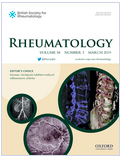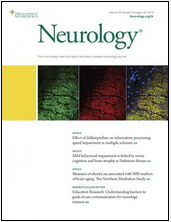 The pathogenic mechanisms for idiopathic myositis (or inflammatory myopathies) are becoming ever clearer. In particular, they involve interferons (IFNs), whose role has been demonstrated by the transcriptome analysis of tissues or cells taken from patients with myositis, which shows an increase in the expression of IFN stimulated genes (ISGs): there is talk of an “interferon signature”.
The pathogenic mechanisms for idiopathic myositis (or inflammatory myopathies) are becoming ever clearer. In particular, they involve interferons (IFNs), whose role has been demonstrated by the transcriptome analysis of tissues or cells taken from patients with myositis, which shows an increase in the expression of IFN stimulated genes (ISGs): there is talk of an “interferon signature”.
Direct and indirect signs of involvement
 A retrospective and prospective study was conducted between 2013 and 2019 in three French paediatric rheumatology Referral Centres. The study involved 64 children with juvenile inflammatory myopathies (dermatomyositis or polymyositis). They underwent an interferon alpha (IFN-α) stimulated gene analysis, or IFN score, and also a direct serum IFN-α assay using the Simoa (single molecule arrays) technique. This second method, which is still at the research stage, uses autoantibodies with a high affinity for IFN, allowing it to be detected in the blood and quantified at much lower levels than using conventional methods.
A retrospective and prospective study was conducted between 2013 and 2019 in three French paediatric rheumatology Referral Centres. The study involved 64 children with juvenile inflammatory myopathies (dermatomyositis or polymyositis). They underwent an interferon alpha (IFN-α) stimulated gene analysis, or IFN score, and also a direct serum IFN-α assay using the Simoa (single molecule arrays) technique. This second method, which is still at the research stage, uses autoantibodies with a high affinity for IFN, allowing it to be detected in the blood and quantified at much lower levels than using conventional methods.
The results of this study show, in juvenile myositis with anti-MDA5 autoantibodies:
- a specific clinical phenotype with more arthritis, skin ulceration, interstitial lung disease and milder muscle impairment than with the absence of anti-MDA5 autoantibodies;
 an IFN score and an IFN-α serum level much higher at the time of diagnosis, decreasing during treatment, as does the level of anti-MDA5 autoantibodies.
an IFN score and an IFN-α serum level much higher at the time of diagnosis, decreasing during treatment, as does the level of anti-MDA5 autoantibodies.
Therefore, IFN-α would seem to have an important systemic role in these types of juvenile myositis, particularly in the subgroup of patients who produce anti-MDA5 antibodies.
Differentiated involvement
A team of American researchers has, for its part, studied muscle biopsies from 119 patients with inflammatory myopathies and 20 individuals without any such disease. This study identified a different interferon signature depending on the type of myositis:
- the genes stimulated by type I interferon are activated to a greater extent in dermatomyositis than in antisynthetase syndrome, necrotising autoimmune myopathy and inclusion body myositis;
 the genes stimulated by type II interferon are activated to a greater extent in dermatomyositis, antisynthetase syndrome and inclusion body myositis, and to lesser extent in necrotising autoimmune myopathy;
the genes stimulated by type II interferon are activated to a greater extent in dermatomyositis, antisynthetase syndrome and inclusion body myositis, and to lesser extent in necrotising autoimmune myopathy;
These advances offer hope that the IFNs could be used as biomarkers for diagnosis and the determination of myositis activity. They also create therapeutic opportunities, for example in refractory dermatomyositis, with the possible use of medicines targeting IFN-I, such as the TANK-binding kinase 1 (TBK-1) inhibitors or the Janus kinase (JAK) inhibitors.
